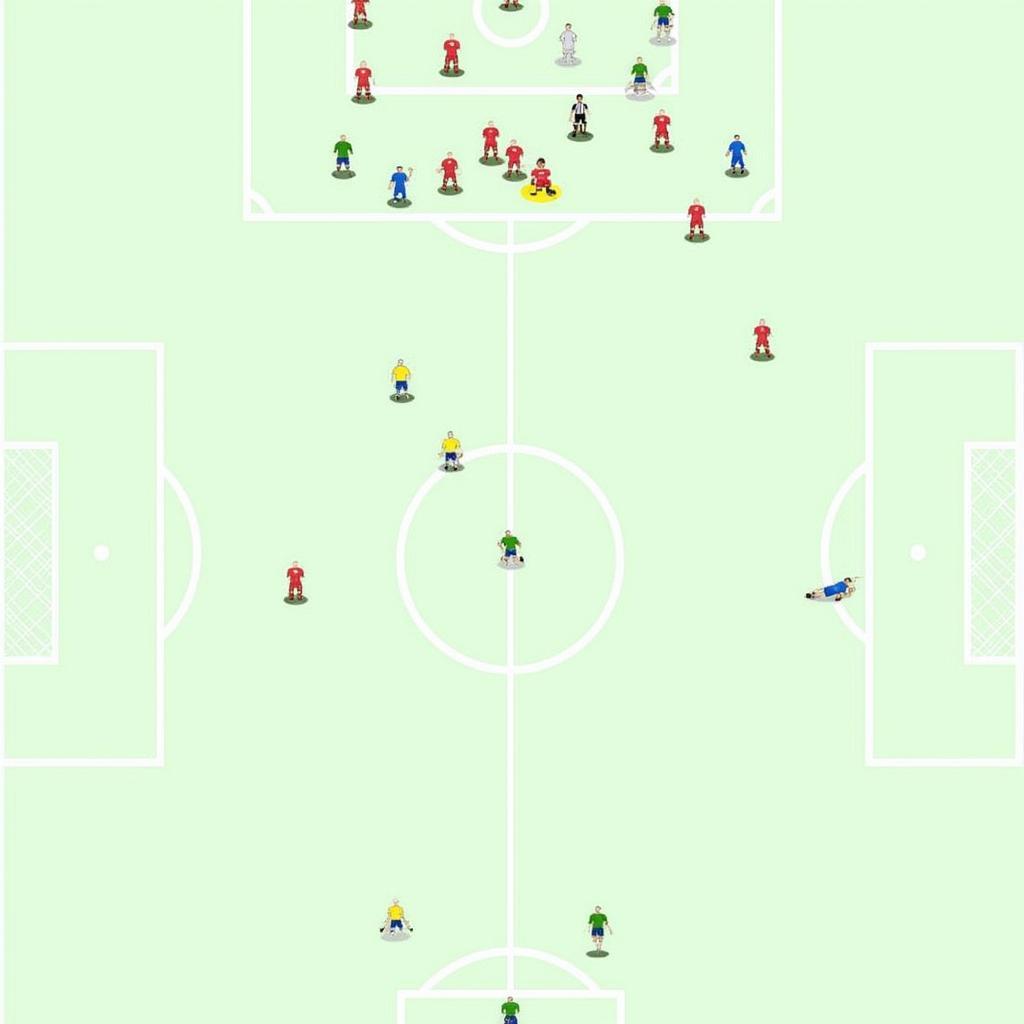The 4-3-3 football formation is a dynamic and widely used system that emphasizes attacking prowess and midfield control. Understanding the nuances of each position within this formation is crucial for both players and coaches seeking to implement it effectively. This article will delve deep into the 4-3-3, exploring the responsibilities of each role, tactical variations, and key considerations for success.
Decoding the 4-3-3: Player Roles and Responsibilities
The 4-3-3 features four defenders, three midfielders, and three forwards. Each position plays a vital role in maintaining balance between attack and defense. Let’s break down each position in detail.
The Defensive Line: Solidity and Support
The back four comprises two center-backs and two full-backs. Center-backs are responsible for protecting the goal, winning aerial duels, and initiating build-up play. Full-backs, on the other hand, must be adept at both defending and attacking, contributing to wide play and providing overlapping runs.
The Midfield Trio: Control and Creativity
The midfield three in a 4-3-3 typically consists of a defensive midfielder and two central midfielders. The defensive midfielder shields the defense, intercepts passes, and dictates the tempo of the game. The central midfielders are responsible for linking defense and attack, creating chances, and contributing to both offensive and defensive phases of play.
The Forward Line: Pace, Power, and Precision
The front three in a 4-3-3 generally comprises two wingers and a center-forward. Wingers provide width, pace, and dribbling skills, supplying crosses and cutting inside to create scoring opportunities. The center-forward acts as the focal point of the attack, finishing chances, holding up the ball, and bringing teammates into play.
Tactical Variations of the 4-3-3: Adapting to Different Scenarios
The 4-3-3 isn’t a rigid formation; it offers various tactical variations. For instance, the “holding” 4-3-3 emphasizes defensive solidity, while the “attacking” 4-3-3 prioritizes offensive firepower. Understanding these variations is crucial for adapting to different opponents and game situations.
Key Considerations for Implementing the 4-3-3
Successfully implementing the 4-3-3 requires more than just positioning players correctly. It demands a cohesive team effort, tactical understanding, and individual skill.
- Teamwork and Communication: Effective communication and coordination are essential for maintaining the 4-3-3’s shape and fluidity.
- Player Versatility: Players must be adaptable and comfortable playing multiple roles, especially in midfield and on the wings.
- Fitness and Stamina: The dynamic nature of the 4-3-3 requires players to possess high levels of fitness and stamina.
 4-3-3 Midfield Dynamics
4-3-3 Midfield Dynamics
Conclusion: Unlocking the Power of the 4-3-3 Football Formation
The 4-3-3 is a versatile and effective formation that can bring success at all levels of football. By understanding the intricacies of the 4-3-3 and its variations, coaches and players can unlock its full potential and dominate the pitch.
FAQ
- What are the main advantages of the 4-3-3 formation?
- What are the weaknesses of the 4-3-3?
- How can the 4-3-3 be adapted to counter different formations?
- Which famous teams utilize the 4-3-3?
- What are some common training drills for the 4-3-3?
- How does the 4-3-3 compare to other formations like the 4-4-2?
- What are the key attributes required for each position in the 4-3-3?
Need help? Contact us: Phone: 0902476650, Email: [email protected] or visit us at 139 Đ. Võ Văn Kiệt, Hoà Long, Bà Rịa, Bà Rịa – Vũng Tàu, Việt Nam. We have a 24/7 customer support team.





